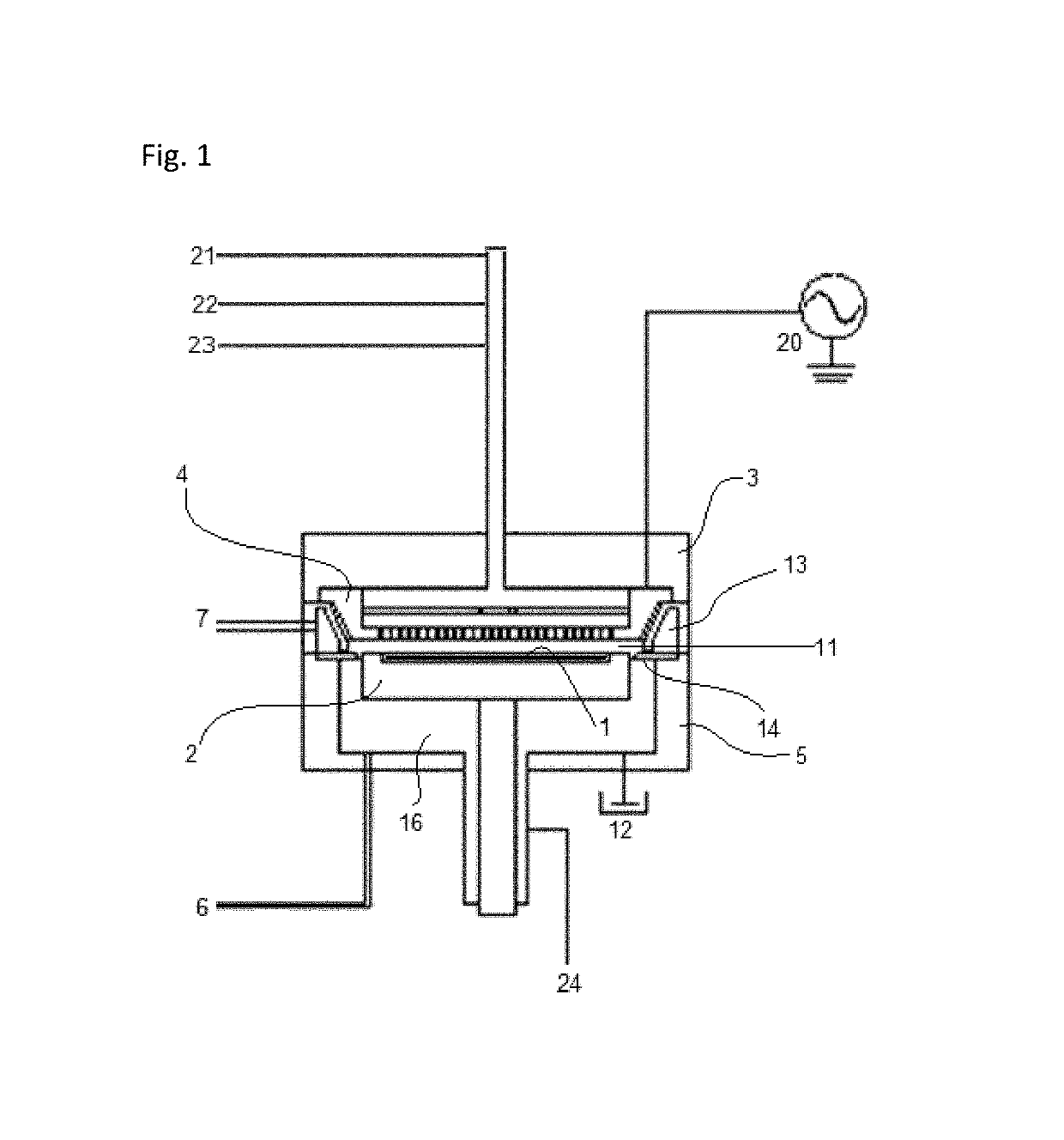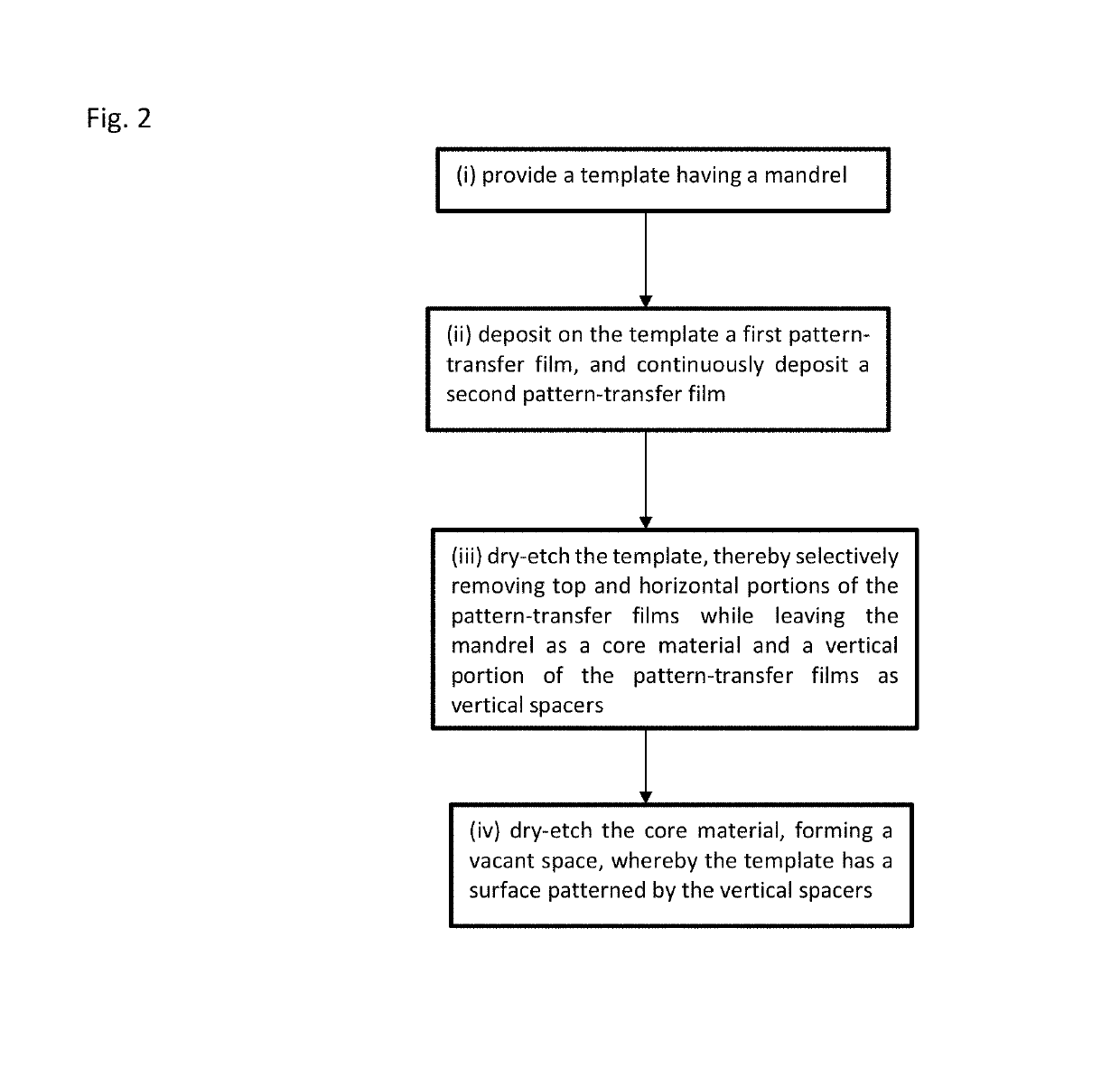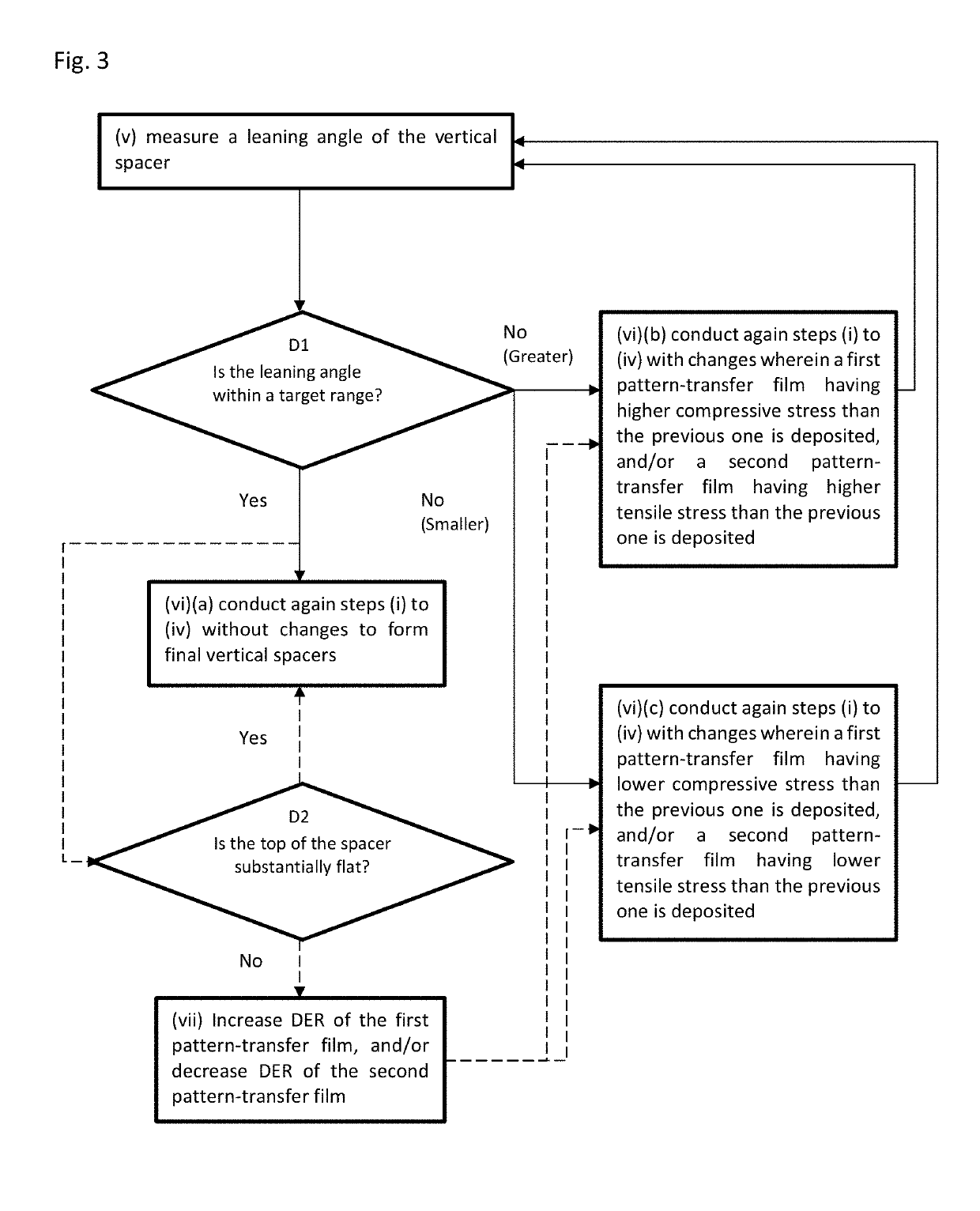Method for forming vertical spacers for spacer-defined patterning
a technology of vertical spacers and patterning, which is applied in the field of forming vertical spacers for spacer-defined patterning, can solve the problems of difficult for semiconductor manufacturers to continuously conduct subsequent integration processes precisely, the problem of increasing the problem of above leaning, and the difficulty of pattern miniaturization in lithography technology
- Summary
- Abstract
- Description
- Claims
- Application Information
AI Technical Summary
Benefits of technology
Problems solved by technology
Method used
Image
Examples
reference example 1
[0108]SiO films and SiN films were each deposited on a Si substrate (0300 mm) by PEALD, one cycle of which was conducted under the conditions shown in Tables 6 and 7 (deposition cycle) below using the PEALD apparatus illustrated in FIG. 1 based on the process sequence illustrated in FIGS. 16 and 17.
[0109]After taking out each substrate from the reaction chamber, film stress of each film was measured. The results are shown in Table 8 below. The film stress was measured based on a “warp” of the substrate before and after the film was deposited on the substrate, wherein the “warp” was expressed by a radius of curvature, and the film stress was calculated using the Stoney equation.
[0110]
TABLE 6(numbers are approximate)Conditions for Deposition Cycle of Silicon Oxide FilmCycle ASubstrate temperature100° C.Pressure400 PaPrecursorBDEAS (bisdiethyl-aminosilane)Precursor pulse (“Feed 1”)0.8 secPrecursor purge (“Purge 1”)2.0 secFlow rate of oxygen (continuous)2 slmFlow rate of Ar (continuous)...
example 1
[0121]A template was prepared and a SiO film was deposited in a manner substantially similar to that in Comparative Example 1 or 2 except that the SiO film was deposited as a SiO two-layer pattern-transfer film which was constituted by an inner SiO single-layer film having a thickness of 20 nm deposited in a manner substantially similar to that in Comparative Example 1 (SiO (n=0)), and an outer SiO single-layer film having a thickness of 15 nm deposited in a manner substantially similar to that in Comparative Example 2 (SiO (n=3)). The SiO two-layer pattern-transfer film had a conformality of 90%. (c) in FIG. 9 shows a STEM photograph of a cross-sectional view of the SiO two-layer film. That is, the inner layer having a thickness of 20 nm was the SiO single-layer film having a stress of −10.7 MPa (relatively tensile), whereas the outer layer having a thickness of 15 nm was the SiO single-layer film having a stress of −169.3 MPa (relatively compressive).
[0122]Next, the SiO two-layer ...
example 2
[0123]A template was prepared and a SiO film was deposited in a manner substantially similar to that in Example 1 except that the inner layer and the outer layer were switched. That is, the SiO film was deposited as a SiO two-layer pattern-transfer film which was constituted by an inner SiO single-layer film having a thickness of 20 nm deposited in a manner substantially similar to that in Comparative Example 2 (SiO (n=3)), and an outer SiO single-layer film having a thickness of 15 nm deposited in a manner substantially similar to that in Comparative Example 1 (SiO (n=0)). The SiO two-layer pattern-transfer film had a conformality of 95%. (e) inFIG. 9 shows a STEM photograph of a cross-sectional view of the SiO two-layer film. That is, the inner layer having a thickness of 20 nm was the SiO single-layer film having a stress of −169.3 MPa (relatively compressive), whereas the outer layer having a thickness of 15 nm was the SiO single-layer film having a stress of −10.7 MPa (relative...
PUM
 Login to View More
Login to View More Abstract
Description
Claims
Application Information
 Login to View More
Login to View More - R&D
- Intellectual Property
- Life Sciences
- Materials
- Tech Scout
- Unparalleled Data Quality
- Higher Quality Content
- 60% Fewer Hallucinations
Browse by: Latest US Patents, China's latest patents, Technical Efficacy Thesaurus, Application Domain, Technology Topic, Popular Technical Reports.
© 2025 PatSnap. All rights reserved.Legal|Privacy policy|Modern Slavery Act Transparency Statement|Sitemap|About US| Contact US: help@patsnap.com



